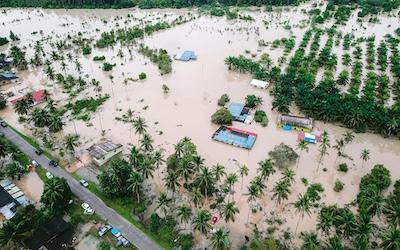The Distributional Impact of FEMA’s Community Rating System
Floods, which make up a large share of natural disasters with far-reaching consequences worldwide, have caused total damages of $200 billion in the United States from 1988 to 2017. Flood insurance in the United States is primarily handled by the federal government through the National Flood Insurance Program (NFIP) administered under the Federal Emergency Management Agency (FEMA), with communities joining voluntarily to obtain federal flood insurance in exchange for implementing floodplain management measures. To increase public support for the NFIP, FEMA devised the Community Rating System (CRS), an incentive program targeted at decreasing flood damage and supporting insurance aspects of NFIP. CRS provides premium discounts to municipalities that go above and beyond NFIP criteria with their flood management initiatives. However, equity and sustainability concerns arise since discounts in CRS communities are compensated by premium increases in non-CRS communities. This study creates counterfactual premiums for every household emulating the world without CRS using FEMA's historical data on actual paid premiums, as well as details on CRS status and premium cross-subsidization within the CRS program. An analysis of the gains and losses in premium payments across the NFIP program because of CRS is made possible by comparing the actual and counterfactual premiums, providing insights into the distributional effects of CRS and how gains and losses relate to community socioeconomic characteristics and flood risk metrics.
Our findings reveal that there is a redistribution of premiums as a result of the CRS program, but this effect is more noticeable in policy counts than in dollar gains or losses. Over 65% of policyholders in CRS communities subsidize the remaining 35%, resulting in only minor financial effects for most households, with 95% reporting gains or losses of less than 0.3% of their income. Higher education, larger populations, older demographics, and urban locations correlate with premium decreases, while rural areas and higher incomes correlate with increases. Premium reductions are observed in localities with higher flood risk, suggesting that CRS encourages residence in riskier places without appreciably altering household location decisions. Additionally, there is a strong correlation between CRS benefits and Hazard Mitigation Assistance (HMA) grants, indicating that federal financing is essential for bolstering community investments in flood management.
Community Rating System (CRS) incentivizes investments in risk reduction above NFIP standards using discounts on insurance premiums. These discounts are cross-subsidized by increasing premiums in non-CRS communities. We examine the distribution of these subsidies and find that redistribution does occur, but the gains and losses are not economically large with 95% of households gaining or losing no more than 0.3% of household income. We also examine their relationship with other community characteristics and find that the strongest predictor of premium reductions is the underlying flood risk level within the community. Thus, CRS appears to reduce the cost of living in the riskier communities.

